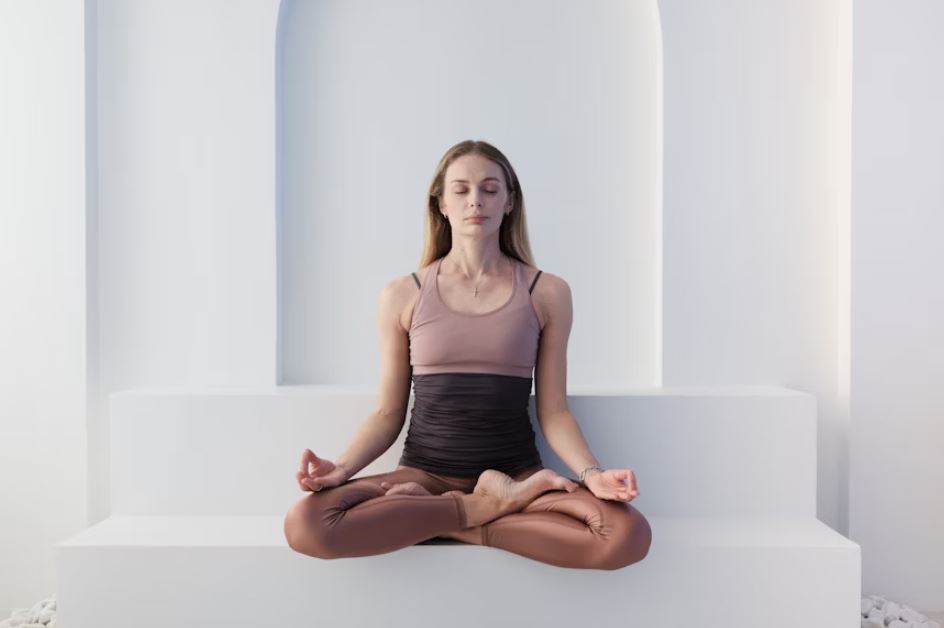Modern life often leaves us feeling overwhelmed, restless, or anxious. While stress is a natural response to challenges, prolonged tension can take a toll on both the mind and body. Yoga offers a holistic way to restore balance by combining mindful breathing, gentle movement, and relaxation techniques. Certain yoga asanas (postures) are especially effective in calming the nervous system, easing anxiety, and bringing inner peace.
In this article, we’ll explore calming yoga asanas to relieve stress and anxiety, along with step-by-step guidance and tips for safe practice.
How Yoga Helps with Stress and Anxiety
- Activates the relaxation response – Deep breathing and gentle postures slow the heart rate and calm the mind.
- Releases physical tension – Stretching and movement ease stiffness in the body caused by stress.
- Encourages mindfulness – Focusing on the breath keeps thoughts from spiraling.
- Balances energy – Certain poses help reduce fatigue, while others quiet restlessness.
- Supports better sleep – Relaxation techniques promote deeper, more restful sleep.
10 Calming Yoga Asanas for Stress Relief
1. Child’s Pose (Balasana)
A comforting resting posture that soothes the nervous system.
How to practice:
- Kneel on the mat, bring big toes together, and spread knees apart.
- Sit back on your heels and fold forward, extending arms ahead.
- Rest forehead on the floor and breathe deeply.
- Stay for 1–3 minutes.
2. Cat-Cow Stretch (Marjaryasana-Bitilasana)
Gently mobilizes the spine and eases tension in the back.
How to practice:
- Start on hands and knees.
- Inhale, arch your back and lift your chest (Cow Pose).
- Exhale, round your spine and tuck chin to chest (Cat Pose).
- Repeat for 5–8 cycles.
3. Standing Forward Bend (Uttanasana)
A grounding pose that calms the mind and stretches the hamstrings.
How to practice:
- Stand with feet hip-width apart.
- Hinge forward from the hips, letting your torso hang.
- Relax the head and neck.
- Stay for 30–60 seconds.
4. Legs Up the Wall Pose (Viparita Karani)
A restorative inversion that reduces fatigue and anxiety.
How to practice:
- Sit sideways next to a wall.
- Swing legs up against the wall as you lie on your back.
- Rest arms by your sides, palms facing upward.
- Close eyes and breathe for 5–10 minutes.
5. Seated Forward Bend (Paschimottanasana)
Relieves mental fatigue while stretching the spine and hamstrings.
How to practice:
- Sit with legs extended forward.
- Inhale to lengthen your spine.
- Exhale, fold forward, reaching toward your feet.
- Hold for 1–2 minutes.
6. Reclining Bound Angle Pose (Supta Baddha Konasana)
Opens the chest and hips while deeply relaxing the body.
How to practice:
- Lie on your back.
- Bring the soles of your feet together, knees dropping to the sides.
- Place cushions under knees if needed.
- Rest hands on your belly and breathe for 5–10 minutes.
7. Corpse Pose (Savasana)
The ultimate relaxation pose for stress relief.
How to practice:
- Lie flat on your back with legs comfortably apart.
- Place arms at your sides, palms facing upward.
- Close your eyes and let your body relax completely.
- Stay for 5–10 minutes, focusing on your breath.
8. Easy Pose with Forward Bend (Sukhasana Variation)
Encourages mindfulness and inner stillness.
How to practice:
- Sit cross-legged with a straight spine.
- Inhale deeply, then exhale as you fold forward.
- Rest forehead on a block or pillow.
- Stay for 1–2 minutes.
9. Bridge Pose (Setu Bandhasana)
Energizes the body while calming the brain.
How to practice:
- Lie on your back with knees bent and feet flat on the floor.
- Press into feet and lift hips toward the ceiling.
- Hold for 5 breaths, then lower slowly.
- Repeat 3 times.
10. Supported Child’s Pose with Bolster
Adds extra comfort for deep relaxation.
How to practice:
- Place a bolster or pillow lengthwise on your mat.
- Kneel and fold forward, resting torso and head on the support.
- Relax arms alongside.
- Stay for 3–5 minutes.
Tips for Practicing Calming Yoga
- Breathe slowly and deeply – Focus on long exhalations to activate relaxation.
- Use props – Cushions, blankets, or bolsters add comfort and support.
- Practice in a quiet space – Minimize distractions for deeper calm.
- End with stillness – Always close your practice with Savasana or meditation.
- Stay consistent – Even 10 minutes daily can make a big difference.
Conclusion
Yoga is not just about flexibility—it’s a powerful tool to ease stress and nurture emotional balance. By practicing these calming yoga asanas, you can release tension, quiet the mind, and cultivate inner peace. Over time, you’ll notice more resilience in handling life’s challenges, along with a deeper sense of relaxation in both body and mind.
Take it slow, breathe deeply, and let yoga guide you into calmness—one posture at a time.
